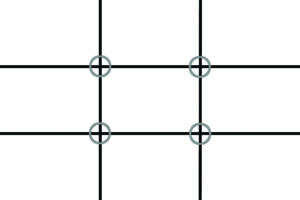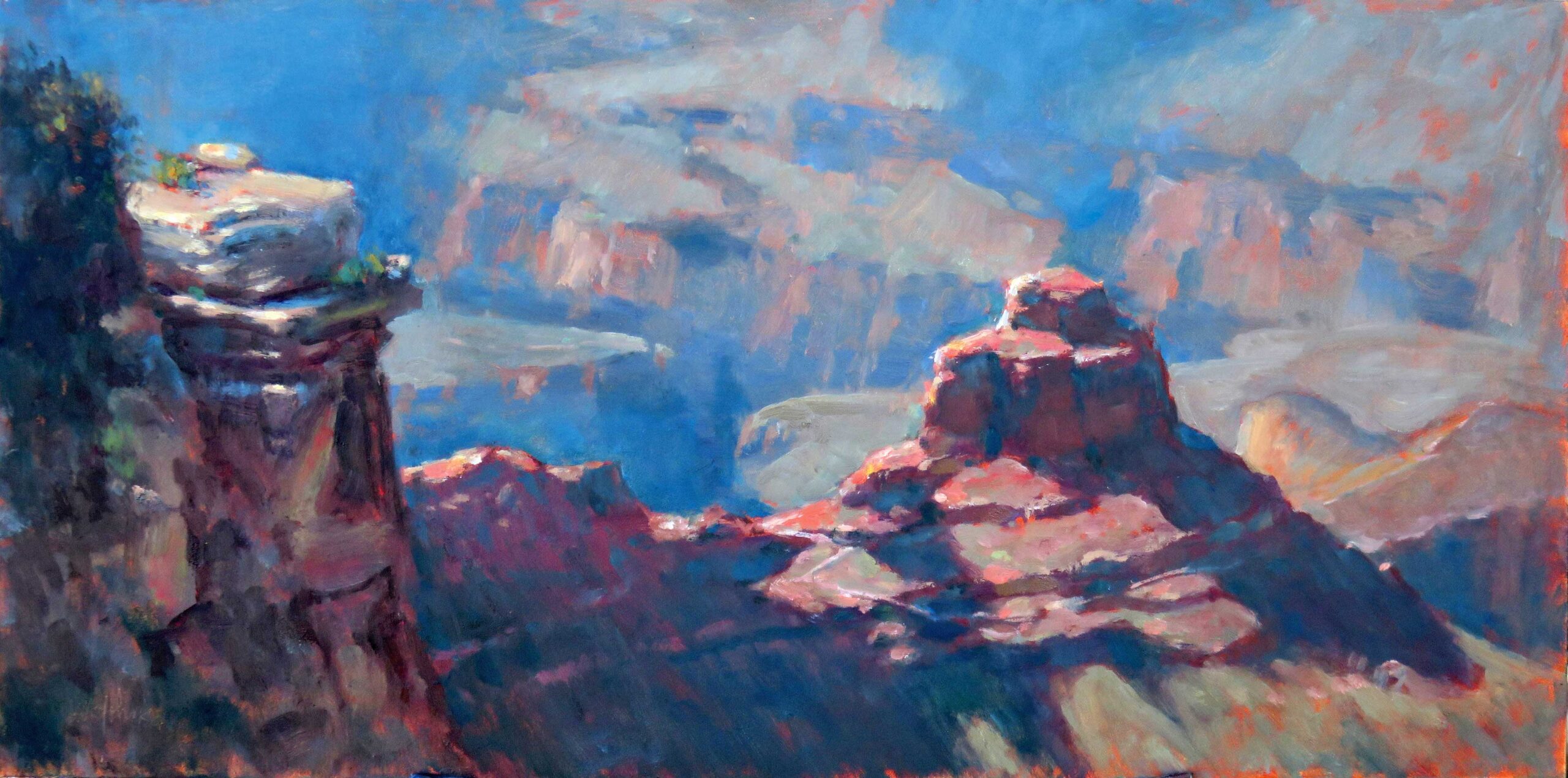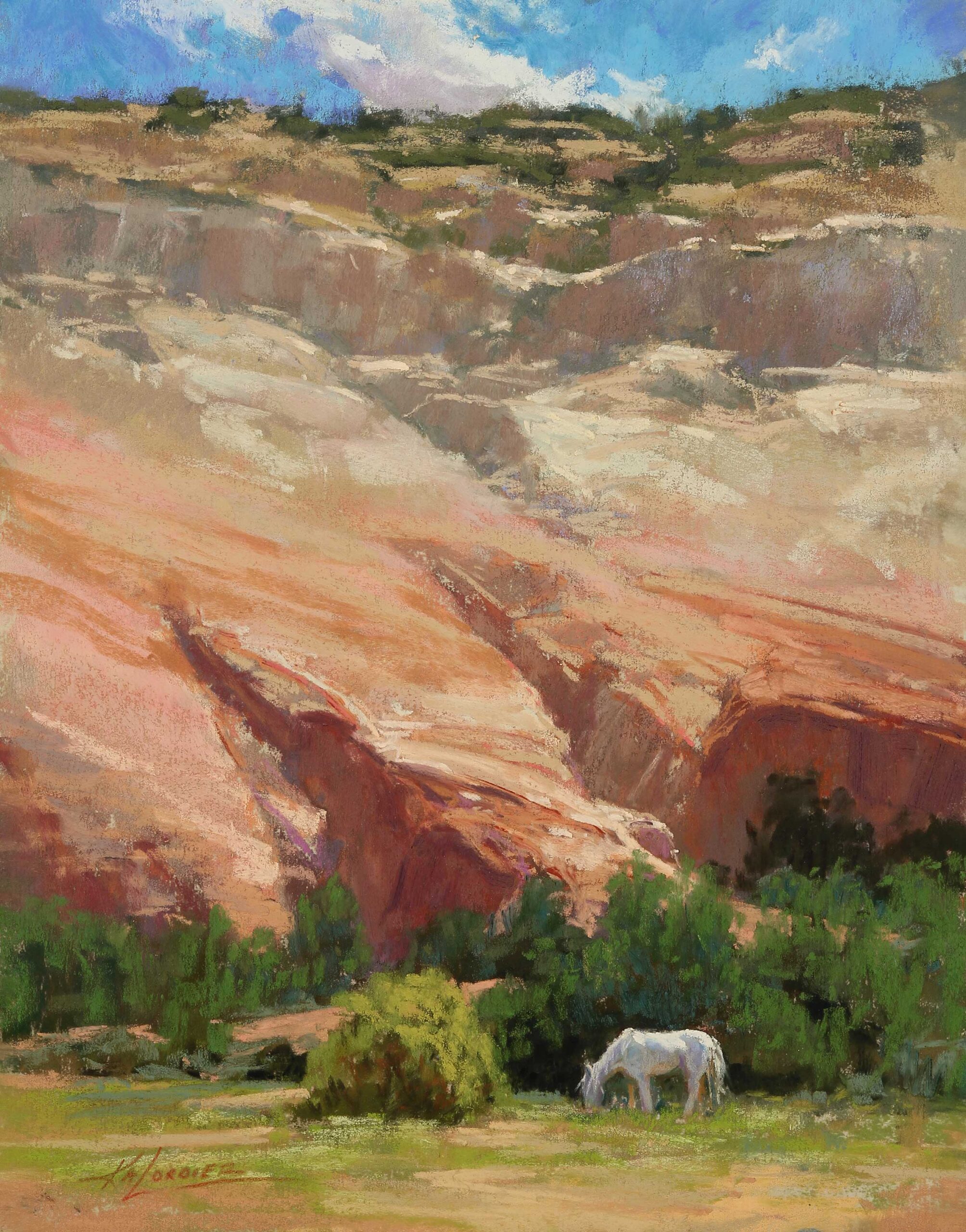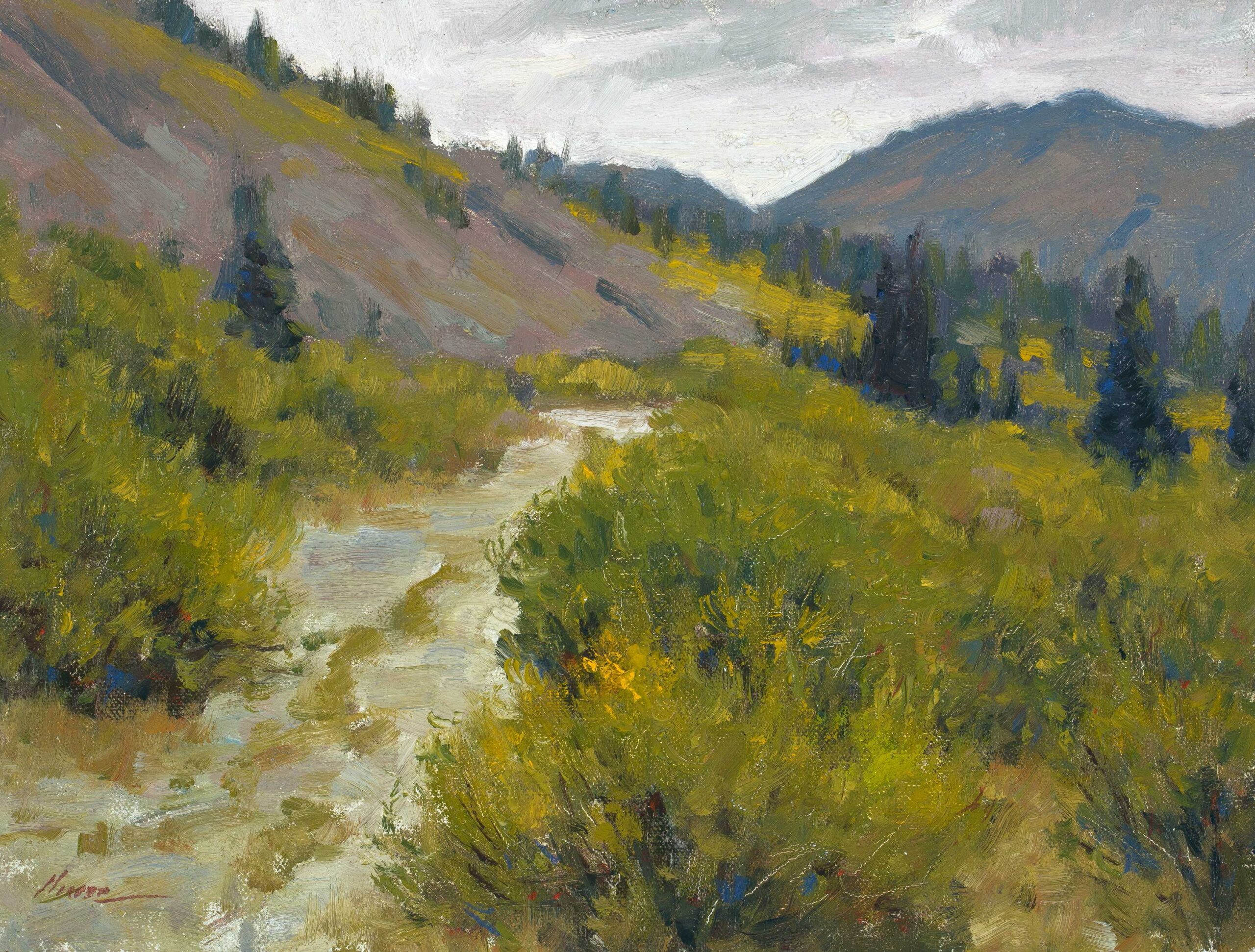Learn how to determine the center of interest when painting landscapes by studying these three examples showing the Rule of Thirds.
by Michael Chesley Johnson
Author of Beautiful Landscape Painting Outdoors: Mastering Plein Air
A design’s center of interest — where you want viewers’ eyes to end up in their journey through a painting — can be placed almost anywhere. But this sweet spot often works better in certain locations.
Some artists use mathematical skills to calculate these with concepts like the Golden Ratio or Divine Proportion. This has a place in the studio, but when painting landscapes en plein air, it robs time. There are many rules to good design — and many ways to break them successfully. Looking at good art and practicing are the best ways to get a handle on good design.
One quick and dirty way to estimate the sweet spots in a painting is to divide your surface into thirds both vertically and horizontally. The intersections of the lines will mark the approximate locations for a good center of interest.

Example of a Long Horizontal Painting with the Rule of Thirds: “Canyon Trails”
The position of this painting’s sweet spot doesn’t quite follow the Rule of Thirds. The top of the foreground mesa sits just below one of the four intersections.
The painting also uses a modified S design in which the eye follows the ridge from left to right, ending up at the mesa at the center of interest.

Example of a Vertical Painting with the Rule of Thirds: “Afternoon Delight”
The vertical format for this scene uses diagonals to lead the eye to the horse at the lower right sweet spot slightly below an intersection in the Rule of Thirds.
The horizontal lines formed by the skyline at the top and the field at the bottom serve to stabilize the design against the active diagonals.

Example of a Horizontal Painting with the Rule of Thirds: “Hint of Autumn”
The path in this scene allows the eye to travel easily to the upper right sweet spot. The opposing diagonal of the hillside offers a relief to the path’s steady progress.
The dark shapes of trees provide other interesting focal points that don’t compete with the center of interest.

And browse more free articles here at OutdoorPainter.com





Excellent examples of using rule iof thirds. I use this too.